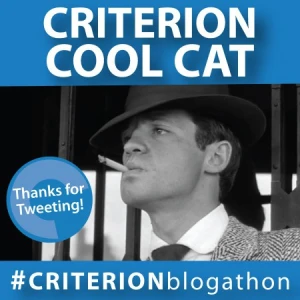Warning: mindless jabbering and sullen bitching this time.
FRIDAY MORNING:
The worst of the week is, I think, over. What’s left is two days of shows that my body does not want to do. Last night was the local Candidate Debates. I usually manage to pawn off the heavier lifting and loading on younger and stronger backs, but attrition has been so heavy this year that I am the younger and stronger back (lies, all lies). So loading in, loading out (both in heavy rain) and an evening spent at a camera have resulted in not only my recent back pains intensifying, but the bad leg waking up and my good leg telling it to shut the hell up, it has a hangover.
 So my current life’s goal is to somehow engineer my professional life such that I can actually have weekends again. This requires long, hard looks at what I’m doing for a living. The major problem with my jobs – I work and pay taxes on four of them (because, remember, I am a moocher and a taker) – is that none of them are full-time; I have managed to juggle them for some time now, and this week was one of those instances where everything intersected and suddenly everybody needed me. I skipped out on the memorial service of an acquaintance because I desperately needed that evening to rest and heal.
So my current life’s goal is to somehow engineer my professional life such that I can actually have weekends again. This requires long, hard looks at what I’m doing for a living. The major problem with my jobs – I work and pay taxes on four of them (because, remember, I am a moocher and a taker) – is that none of them are full-time; I have managed to juggle them for some time now, and this week was one of those instances where everything intersected and suddenly everybody needed me. I skipped out on the memorial service of an acquaintance because I desperately needed that evening to rest and heal.
And really, I’m tired of being envious and somewhat angry every time somebody posts a “Yay, it’s the weekend!” message or graphic. On one level, that is the choice I made when I decided to become an actor. On a deeper level, I am tired of acting for drunks and assholes. Would I feel better about this if I were doing – and here’s a label I hate, but like all labels, it has its uses – “legitimate” theater? Possibly. It’s nice to have an audience that, you know, actually wants to be there to listen.
Realize that this is exhaustion, pain and bitterness talking. I will be at my shows this weekend, and as usual, hit my marks and give it my all and eat ibuprofen like it was candy afterwards. Exhaustion and pain from once again humping equipment, bitterness from the economic necessity of doing same.
Let’s leave that for now and go to something that’s less rancorous, something that intrigues me: I own a Kindle, but I still pay lip service to physical books. It is a toss-up as what is going to collapse and kill me first in my home office: the stacks of movies or the stacks of books (Books are in the lead in that betting pool, adjust your wagers accordingly).
 A couple of months back, on my moribund Tumblr site, I reposted the cover of Arthur Byron Cover’s The Playpus of Doom, because it’s a fun title to contemplate and a good read besides, which has gone out of print. Some discussion of the book and its author followed. I discovered that there was no Kindle edition of Platypus, and the vintage paperbacks were outrageously expensive. But there was a Kindle version of his first book, Autumn Angels, which I loved, and paperbacks of its sequel, An East Wind Coming, were dirt cheap. I remember being somewhat disappointed in it, but at that price, sure, why not revisit it? So I received my yellowing package and flipped it open and oy.
A couple of months back, on my moribund Tumblr site, I reposted the cover of Arthur Byron Cover’s The Playpus of Doom, because it’s a fun title to contemplate and a good read besides, which has gone out of print. Some discussion of the book and its author followed. I discovered that there was no Kindle edition of Platypus, and the vintage paperbacks were outrageously expensive. But there was a Kindle version of his first book, Autumn Angels, which I loved, and paperbacks of its sequel, An East Wind Coming, were dirt cheap. I remember being somewhat disappointed in it, but at that price, sure, why not revisit it? So I received my yellowing package and flipped it open and oy.
Were all paperbacks like this? Cramped type crowded onto the page? I couldn’t read this.
So I guess that e-readers have spoiled me for my beloved paperbacks. Or maybe it was just this book from this publisher, but memory tells me this is not the case. It’s that my progressive bifocals and tired eyes need a less populated, cleaner page to enjoy the printed (ha!) page as I once did. I also bought two larger trade paperbacks of Ellis Peter Cadfael novels and Burroughs’ Naked Lunch, which I also need to revisit, and they are more comfortable to read.
Almost all my recent reading has been on the Kindle – saving a few dollars, and not adding to the teetering piles of bound paper that will someday crush me. I miss not being able to look up and see the titles with the easy familiarity of physical friendship, but as I get older and the type seems to get smaller, I’m glad that technology has given me a way to continue to do something that I love – even as I try to find ways to allow myself the time to do that.
SATURDAY:
There is the other side to that love of new technology, and it was brought home Friday night when I came home – once again, in heavy rain – to a dark house in a dark neighborhood, something I hadn’t experienced since the aftermath of Hurricane Ike. Used candles and flashlight that night, and I could, at least, read my Kindle Fire. As long as the battery held out.
 My wife’s phone was dead, mine was halfway there – but I had charged both it and the Kindle before I left for the show. My scripts are all on the Kindle (and yes, I do read over my script before every show). Sleep was fitful that night. The next morning my wife and I went looking for a restaurant with power (luckily plentiful) and she used the car charger to get her phone back up to a minimal level. After eighteen hours, the power came back on and I gratefully grabbed a couple of hours of very deep sleep in a cooler house before I had to rise and get ready for another show.
My wife’s phone was dead, mine was halfway there – but I had charged both it and the Kindle before I left for the show. My scripts are all on the Kindle (and yes, I do read over my script before every show). Sleep was fitful that night. The next morning my wife and I went looking for a restaurant with power (luckily plentiful) and she used the car charger to get her phone back up to a minimal level. After eighteen hours, the power came back on and I gratefully grabbed a couple of hours of very deep sleep in a cooler house before I had to rise and get ready for another show.
God, I’ll be glad when this week will be over and I’ll be able to grouse and complain about other peoples’ work and not my own. You probably will be, too.
LATER SATURDAY NIGHT:
UPDATE: It’s over. I’m too tired and sore to go to sleep. Crap.
Oh, yes, speaking of which: that Crapfest I was looking forward to? Postponed. Host Dave got a paying gig. I identify. I just finished off a bunch of those. And just as well, that probably would have been enough to finish me off.
I’m turning this off and going to bed now.












